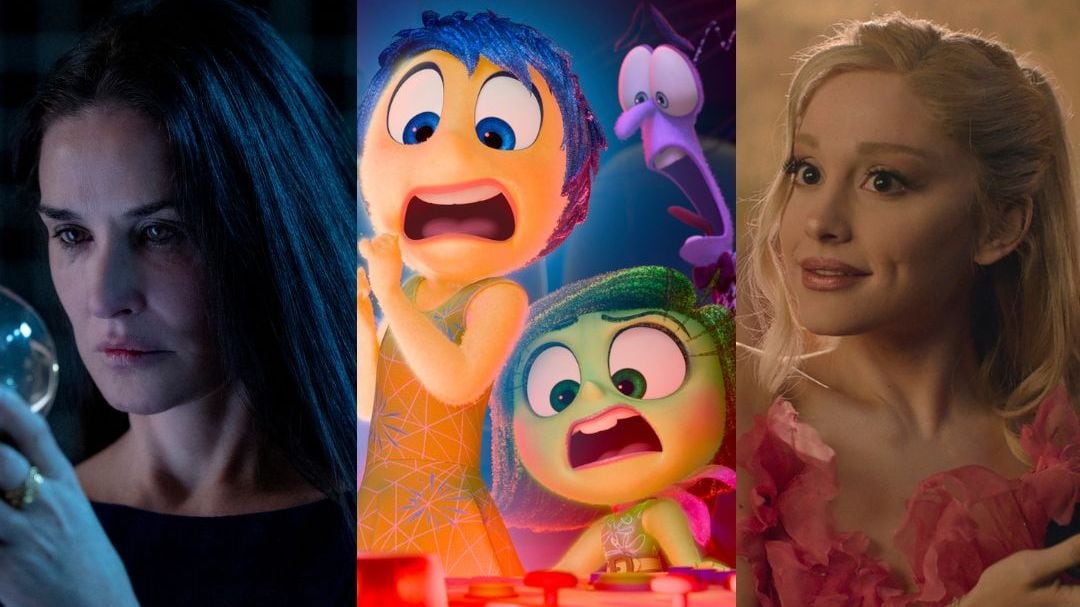New York: For the first time in recent history, Hollywood has reached gender parity in the leading roles of its top-grossing films, with an equal percentage of movies featuring both female and male protagonists. This significant milestone was revealed in two separate annual studies released on Tuesday, marking a major shift in the industry.
Films like ‘Wicked’, ‘Inside Out 2’, and ‘The Substance’ have propelled Hollywood’s theatrical releases to this unprecedented moment of equality in 2024. Of the top 100 highest-grossing films in the US this year, 42 percent had female protagonists, and 42 percent had male protagonists, according to a report by the Centre for the Study of Women in Television and Film at San Diego State University.
Get Latest Mathrubhumi Updates in English
Meanwhile, the USC Annenberg Inclusion Initiative, which also unveiled its annual study, found that 54 percent of the top 100 films featured girls and women in lead roles. This marks a huge increase from just the year before when 30 percent of films had women at the forefront. Looking back further, in 2007, the percentage was only 20 percent.
“This is the first time we can say that gender equality has been reached in top-grossing films,” said Stacy L. Smith, founder of the Annenberg Inclusion Initiative.
She continued, “In 2024, three of the top five films had a girl or woman in a leading role, as did five of the top 10 films — including the number one film of the year, Disney’s ‘Inside Out 2’.”
Shifting industry attitudes and the role of advocacy
Smith was quick to point out that this shift is not simply the result of an economic realisation but the outcome of years of effort from various constituencies and groups.
“We have always known that female-identified leads would make money. This is not the result of an economic awakening but is due to a number of different constituencies and efforts — at advocacy groups, at studios, through DEI initiatives — to assert the need for equality on screen.”
While the progress in gender parity for leading roles is a notable achievement, other metrics show that there is still much work to be done to address gender inequality across the board. The San Diego State study revealed that the percentage of female characters in speaking roles increased slightly, from 35 percent in 2023 to 37 percent in 2024. The number of major female characters also rose modestly from 38 percent to 39 percent during the same period.
Lauzen, from the Centre for the Study of Women in Television and Film, noted, “Films such as ‘The Substance’ pushed back hard against a culture that considers women disposable. While the number of films with female protagonists rose to a historic high in 2024 after a dismally lean 2023, the percentages of women in the more stable categories of major and speaking roles reflected only minor gains.”
Universal Studios leads the way in female representation
When it comes to studio performance, Universal Studios stands out with the best record for female representation. Under the leadership of Donna Langley, Universal led the charge with 66.7 percent of its releases in 2024 focusing on female protagonists, according to the Annenberg Inclusion Initiative.
Underrepresented racial and ethnic groups still struggle for representation
While gender representation has made significant strides, the same cannot be said for racial and ethnic diversity. The top films of 2024 continue to fall short of reflecting the demographics of the US population. According to the Annenberg report, underrepresented racial or ethnic groups make up roughly 42 percent of the US population, but only 25 percent of the top films in 2024 featured an underrepresented lead or co-lead.
Of these 25 films, the leads or co-leads were 38 percent Black, 15.4 percent Asian or Asian American, and 3.9 percent Hispanic. This marks a notable decrease from 2023 when 37 leads or co-leads were people of colour.
Smith pointed out that “the progress we saw for female-identified leads was not matched by the findings for underrepresented leads.”
She added, “This downturn signifies a lack of investment in storytelling that reflects the audience as a whole. The reality is that audiences want to see stories about women and people of colour — studios and filmmakers do not have to choose between the two.”








